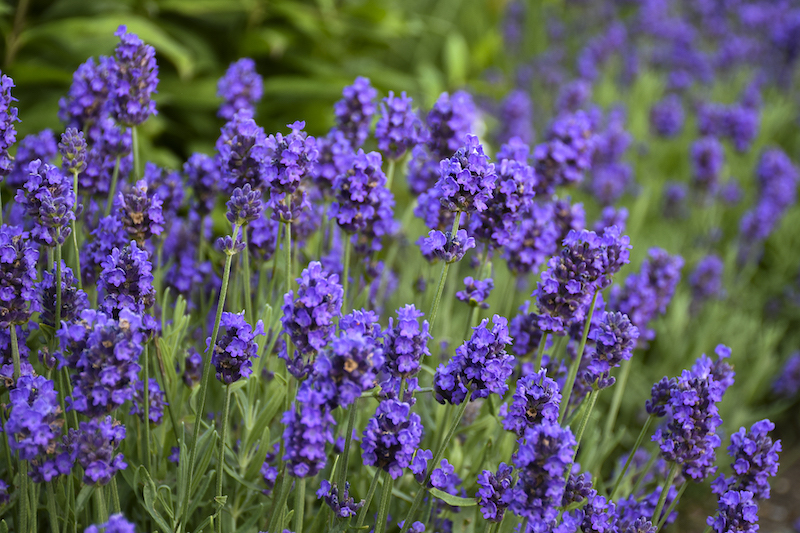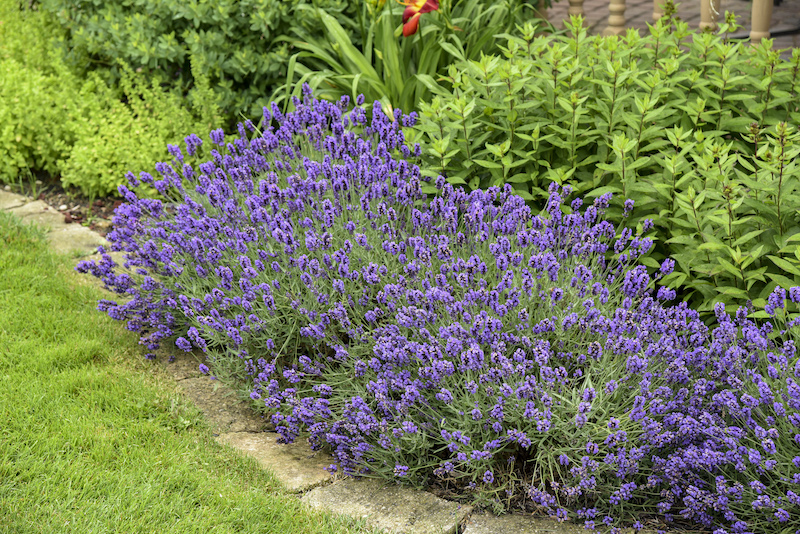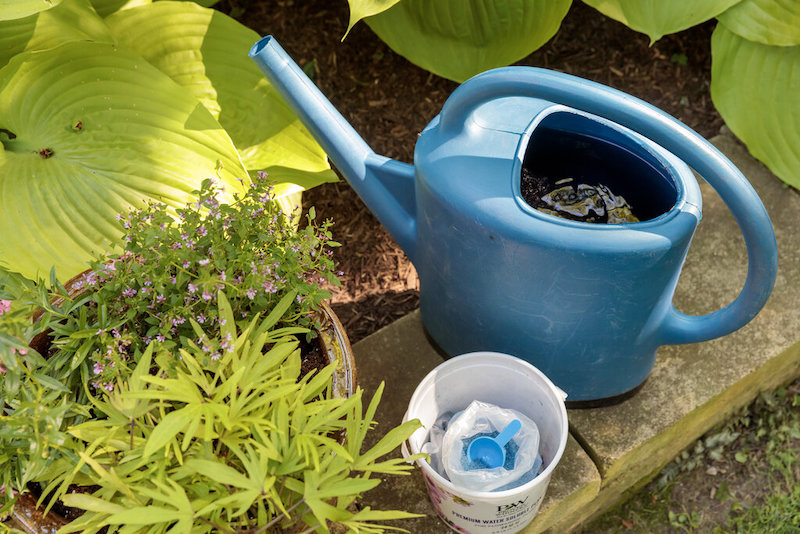The genus Lavandula is native to mountainous areas of countries bordering the Western European Mediterranean region. They thrive in dry, rocky locations that have plenty of heat and sun. Some varieties are more tolerant to colder growing zones such as English Lavender, while Spanish Lavender grows well in humid Southern locations. It may take a couple of growing seasons for newly planted lavender to bloom.

Because lavender thrives in rocky, dry soils, it rarely requires additional fertilizer to grow vigorously; in fact, too much fertilizer applied at the wrong time of year will prevent lavender plants from hardening before winter. Additionally, unused nutrients can build up in the soil from over-fertilization and can become toxic to lavender. The best way to feed lavender is to provide slow-release trace minerals and nutrients that mimic its natural setting.
How to Fertilize Lavender
Lavender doesn’t require extra chemical fertilizers to get it to bloom. Instead, you can focus on using organic soil amendments that improve the overall soil condition and stimulate soil microbes. Organic amendments such as compost will deliver nutrients to your plants slowly and steadily and will help to build the soil. Also, make sure the soil is fast draining because lavender is very susceptible to root rot. If it is not, amend your soil with greensand, coconut coir, small gravel, or organic compost to encourage drainage and aeration. Every spring, apply a slow-release, microbial, mineral-rich feed such as seaweed/kelp, shellfish, blood meal, or bone meal, which will provide all the fertilization lavender needs. Excess fertilizer can become toxic to the lavender's root system.

Best Time To Fertilize Lavender
If applying a mineral-rich, slow-release, organic fertilizer, apply once a year in spring, when you first start to see lavender push out new growth. Whether using a water-soluble or granular formula, first water the soil around your lavender plant; then dig a trench outside of the perimeter of the lavender's root system; work the fertilizer into the trench, following the instructions on the package, backfill the soil; and then water the soil again around the lavender’s root perimeter.

Best Fertilizer For Lavender
Organic amendments are the best way to condition and naturally improve soil structure, which in turn will support the overall health of your lavender plants. Because lavender can be used in culinary and beauty products, it is better to use organic products that build soil health. Try using a natural product such as seaweed/kelp or bone meal, which although not a complete fertilizer, provides important trace elements that will enhance a soil-building program.
Lavender Fertilizing Tips
- Healthy soil will fertilize lavender
- The soil must be well draining
- Elemental and trace minerals support overall healthy growth
- Apply trace minerals to the soil once a year in spring
Warnings
-Always wear protective gloves and a face mask when handling chemical fertilizers.
-Closely follow all directions and storage guidelines that are on the fertilizer label.
 |
Author Chris Link - Published 01-20-2023 |
